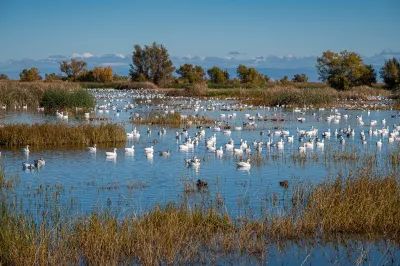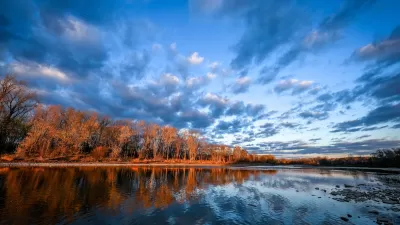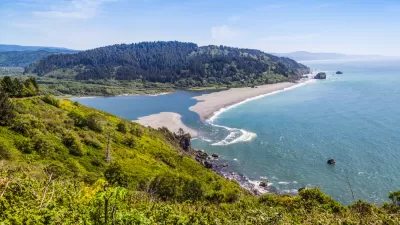Anticipating that the Trump EPA will reinstate a 2017 policy that excluded seasonal wetlands and waterways from environmental protections.

California state lawmakers and environmental advocates are seeking ways to protect wetlands and waterways, reports Alastair Bland for CALmatters.
The Trump administration plans to change the definition of the Clean Water Act to exclude seasonal waterways, which make up 80 percent of linear miles of streams and rivers in California. During his first term, Trump signed an executive order to rescind protections for seasonal waterways. President Biden later reinstated those protections. “The new Trump administration decision is intended to align with a 2023 landmark Supreme Court ruling. The court ruled that a wetland, to gain federal protections under the Clean Water Act as ‘waters of the United States,’ must bear a ‘continuous surface connection’ to perennial navigable waters.”
According to executive director of California Coastkeeper Alliance Sean Bothwell, “This is a Supreme Court case, decided on the East Coast, where rivers and hydrology flow a lot more than here in California. I really feel like the decision didn’t take into account our Mediterranean climate.”
California Senate Bill 601, authored by State Senator Ben Allen, would strengthen the Porter-Cologne Water Quality Control Act and add new permitting rules for discharging pollutants. Noting the urgency of the bill, Allen said, ““It is clear that federal priorities are shifting to leave many of our water ecosystems more vulnerable to dangerous pollutants and discharge.”
FULL STORY: ‘Puddles and ditches’: California considers protecting wetlands from Trump order

Study: Maui’s Plan to Convert Vacation Rentals to Long-Term Housing Could Cause Nearly $1 Billion Economic Loss
The plan would reduce visitor accommodation by 25,% resulting in 1,900 jobs lost.

North Texas Transit Leaders Tout Benefits of TOD for Growing Region
At a summit focused on transit-oriented development, policymakers discussed how North Texas’ expanded light rail system can serve as a tool for economic growth.

Why Should We Subsidize Public Transportation?
Many public transit agencies face financial stress due to rising costs, declining fare revenue, and declining subsidies. Transit advocates must provide a strong business case for increasing public transit funding.

How to Make US Trains Faster
Changes to boarding platforms and a switch to electric trains could improve U.S. passenger rail service without the added cost of high-speed rail.

Columbia’s Revitalized ‘Loop’ Is a Hub for Local Entrepreneurs
A focus on small businesses is helping a commercial corridor in Columbia, Missouri thrive.

Invasive Insect Threatens Minnesota’s Ash Forests
The Emerald Ash Borer is a rapidly spreading invasive pest threatening Minnesota’s ash trees, and homeowners are encouraged to plant diverse replacement species, avoid moving ash firewood, and monitor for signs of infestation.
Urban Design for Planners 1: Software Tools
This six-course series explores essential urban design concepts using open source software and equips planners with the tools they need to participate fully in the urban design process.
Planning for Universal Design
Learn the tools for implementing Universal Design in planning regulations.
City of Santa Clarita
Ascent Environmental
Institute for Housing and Urban Development Studies (IHS)
City of Grandview
Harvard GSD Executive Education
Toledo-Lucas County Plan Commissions
Salt Lake City
NYU Wagner Graduate School of Public Service





























